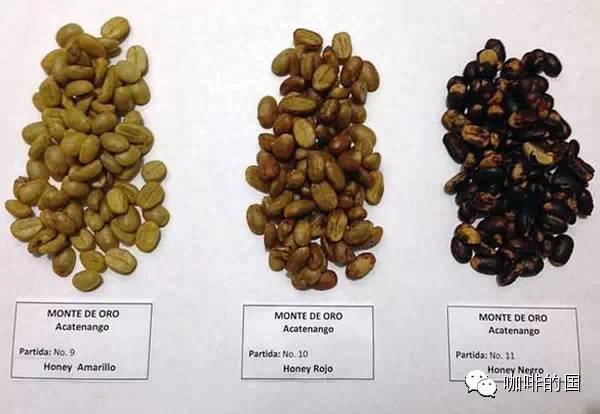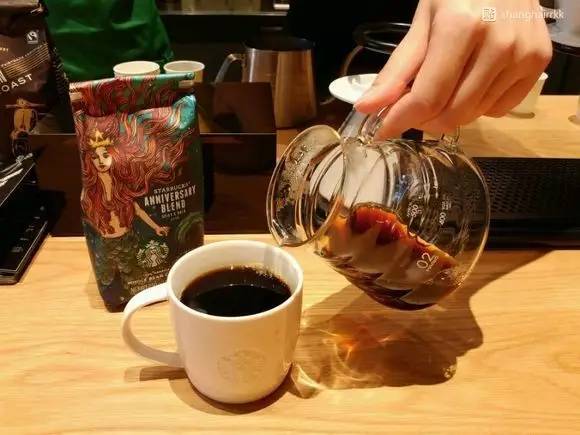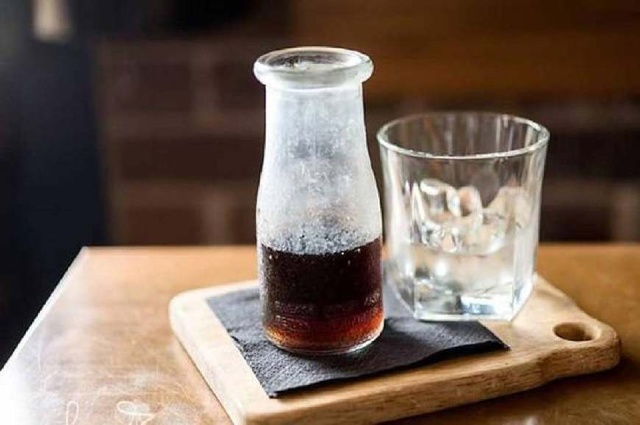[popular science post] A collection of honey processing knowledge! Let's learn about it before brewing.
For professional baristas, please follow the coffee workshop (Wechat official account cafe_style)
What is honey treatment?
Honey treatment, called HoneyProcess or Miel Process, is used in coffee gardens in Costa Rica (Costa Rica), Panama (Panama) and Guatemala (Guatemala), which is called Honey Coffee. The so-called honey treatment refers to the process of making raw beans with mucous membrane for sun-drying. After the outer pulp of the coffee bean is removed, there will be a layer of sticky jelly. The traditional washing method washes it away with clean water, but this direct drying method has been born because of the limitations of water resources in some high-altitude areas.



What's so special about honey treatment?
Juxtaposed with the two traditional treatment methods, water washing and sun treatment, honey treatment has become a unique method in coffee treatment. The taste difference between honey treatment and water washing treatment: higher sweetness, higher sugar content and higher alcohol thickness (under the premise of the same baking degree)
Honey treatment keeps the coffee clean after washing, and although the brightness of the coffee decreases, it increases the sweetness and caramel taste. According to the different degree of honey treatment, honey-treated coffee can be divided into yellow honey treatment, red honey treatment and black honey treatment.



Small classification of honey treatment
According to NordicApproch, Seattle Coffee and Origin Coffee, the raw bean companies run by the big shot Tim, it can be summed up:
Yellow honey: retain about 60% of the pectin; drying method requires the most direct heat absorption, accept the most light drying, lasting about 8 days to achieve a stable water content.
Red honey: retain about 75% of the pectin; dry longer than yellow honey, and reduce the time of direct sunlight exposure, even in shading sheds, lasting about 12 days.
Black honey: retain close to 80% pectin; dry for the longest time, lasting at least 2 weeks, with a cover to avoid too strong sunlight, prevent drying too fast, and make sugar conversion more fully.



Basically, the manufacturing process of [red honey] is much more difficult than that of [yellow honey], but the taste spectrum is deeper, with a hint of game on the palate, but instantly feathered into a rich fruit sweet aroma, just like the delicate fermented aroma of Yega Xuefei's well-known sun beans Biloya and Aricha.
The main difference between [white honey] treatment and [yellow honey] treatment is "the distinction of drying thickness", which determines the drying speed and drying uniformity, and then affects the sweetness and fermentation degree of coffee.
Half-sun which is very close to honey treatment.
Brazilian coffee fields are endless and are mostly harvested mechanically in order to meet the economic benefits. When 75% of the coffee fruit in the coffee garden turns red, mechanical harvesting begins, followed by the same pre-washing operation, which is moved into the sink to remove floating beans, sift out sunken beans, and then use a large pulp screening machine to dig out the pulp and remove the pods covered with pectin.



The next stage is separate from the washing method: the sticky pods do not need to be moved into the tank to ferment, but to the outdoor bean drying farm. Because of the dry climate in Brazil, the sticky pectin on the pods will harden in about a day or so. Then use a large number of manpower to turn up and down, so that the pods dry evenly inside and outside, so as not to return to moisture and stink. In about two to three days, with the help of the natural force of the sun pass and dry climate, the pods can achieve a certain degree of dehydration. Then further dry with a dryer, the water content is reduced to 10.5%, and the pods are stored in a special container for about 10 days to further mature, in order to stabilize the quality, remove sheep skins (pods) before export, remove coffee beans, and pack them in stages.
The difference between honey treatment and half-sun exposure
The biggest difference between honey treatment and Brazilian half-sun treatment is that honey treatment does not touch dripping water, because be sure to choose flawless red fruit, pectin is sweet. Compared with the large half-sun pulp planer in Brazil, the honey-treated pectin planer is more demanding, and the thickness of pectin planing must be precisely controlled, just like a bean grinder. In Brazil, the retention of half-sun pectin is only about 60%, which is equivalent to that of [yellow honey].



Benefits of honey treatment
The advantage of honey treatment is that it can best preserve the original sweet flavor of coffee ripe fruit, giving the coffee a light black sugar flavor and drupe flavor, while the berry flavor also supports the basic aroma of red wine, which is considered to be a very elegant product.
On the topic of "Central and South American honey-treated coffee lacks clear flavor and blindly pursues fermentation characteristics", during the cup test, it was found that white honey and yellow honey coffee did not have the fermentation and soy sauce flavor of traditional honey treatment at all. On the contrary, sweet and sour coffee is more like a cup of excellent washed coffee. This kind of honey treatment brings a sour, refreshing and clean constitution similar to that of red berries.



Costa Rica and honey treatment
The coffee beans produced at the high latitudes of Costa Rica are famous in the world, full-bodied, mild in taste, but extremely sour. The coffee beans here have been carefully processed, which is why they have high quality coffee. Located in the south of SanJos é, the capital of Tarasu, Costa Rica is one of the most valued coffee growers in the country.



Costa Rica in order to strengthen the export of high-quality coffee to Europe, America, Japan and other countries. Vigorously develop high-quality coffee and increase the added value of coffee exports. At the same time, the government has set up a "coffee trust fund" to help coffee farmers in need tide over their financial difficulties and cultivate high-quality coffee. In order to make coffee more good quality and characteristics, so the use of honey treatment, which is popular in recent years, to change the reputation of poor coffee. Therefore, the Costa Rican boutique coffee we are now exposed to is the fine processed honey beans of each of its estates. However, there are still coffee beans treated with ordinary sun water, but the quality and flavor are not so good, so they are not as widely traded as honey-treated beans.



What is the honey treatment of failure?
Failed honey-treated coffee will have a strong defective sun flavor, similar to the rough sun-cured onion, durian, bean curd and, more seriously, alcohol potions. Normal honey-treated coffee has a mild sour taste. If it is sour enough to pout, it will also be a good product.
The first thing about honey treatment is freshness. If the manufacturing period is more than 10 months, the charming sweet aroma of fruit will be lost.



Honey treatment sweet or sun sweet?
Why does the sun treatment retain 100% flesh but still seem to be not as sweet as honey treatment? Because the sun still retains the peel after all, the fermentation process of some microbes is not so deep, and the sugar may remain in the dried pulp.
Of course, each treatment has its own characteristics, and the climate of each year will also affect the flavor of coffee. Indeed, if you want to have a deeper understanding of the flavor differences between different treatments, drinking directly is a very intuitive way.



What is the difference in flavor between yellow honey, red honey and black honey in Costa Rica?
Simple understanding: the more pectin you keep, the richer and sweeter the coffee will be. Here is a comparison of the flavors of several honey treatments in our cafe:
Yerzaro processing plant yellow honey flavor: lively citrus flavor in acid taste, BlackBerry fruit flavor, acidity and taste, melons sweet taste smooth, drupe / micro-flower aroma, while the aftertaste has a significant coffee flower aromas. it is a tasty coffee full of Latin and rural flavor.
Tobushi Garden Red Honey flavor: honey, lime, orange blossom, white chocolate, good sweetness, soft acidity, round and full, long-lasting finish.
Faramey Manor Black Honey treatment: roasted almonds, cream aroma, plum acid, honey sweet, brown sugar tail rhyme, bitter and clear.
The most obvious difference between them is that one is sweeter than the other from yellow, red and black, plus a richer fruit rhyme. The biggest feature is a very amazing sweetness, plum, honey, brown sugar tail rhyme.



A brief summary:
Sweetness: black honey > red honey > yellow honey > white honey
Cleanliness: White honey > yellow honey > red honey > black honey
Sense of balance: red honey / yellow honey > black honey / white honey



How to cook honey treated beans?
Our so-called technique is not to adjust the flavor, because the flavor is determined by the coffee bean producing area, treatment method and baking method. The technique is to adjust the speed and proportion of water passing through the coffee powder, so as to adjust the amount of flavor release. Then the taste must depend on the following points:
1. The speed at which water passes through coffee powder (selection of utensils)
two。 The temperature of water
3. What is the thickness and state of the powder?
4. Depth of baking degree
5. The length of steaming time
Usual hand punching parameters: one serving, 15 grams of powder, thickness and water temperature slightly adjusted due to different baking
1. Yellow honey (medium baking): small Fuji ghost teeth grinding 3.5, water temperature 90-91 degrees, gouache 1:14
two。 Red honey (medium baking): small Fuji ghost tooth grinding 4, water temperature 89-90 degrees, gouache 1:15
3. Black honey (medium and shallow baking): small Fuji ghost tooth grinding 3.5. water temperature 90-91 degrees, gouache 1:14



Important Notice :
前街咖啡 FrontStreet Coffee has moved to new addredd:
FrontStreet Coffee Address: 315,Donghua East Road,GuangZhou
Tel:020 38364473
- Prev

Why doesn't Starbucks go around in circles? Illustration of Starbucks hand-made coffee steps
The exchange of professional baristas please follow the coffee workshop (Wechat official account cafe_style) recently many novices have asked the editor why Starbucks hands don't go around in circles. Recently saw a post, detailed illustration of Starbucks hand coffee steps below: post source: Starbucks bar owner: shanghairrkk Starbucks has launched hand coffee in many stores, but
- Next

Have a cup of cold coffee in summer. The 12-hour process makes it cool and delicious together.
Professional barista communication Please follow the coffee workshop (official Wechat account cafe_style) when it comes to drinking coffee, many friends will think of mocha, cappuccino, Blue Mountain and so on. As we all know, the nutrients in coffee come from coffee beans. In order to maximize the extraction of these mellow substances, various extraction methods have been invented. Today, let's talk about not only the price is high and cold, but also the temperature.
Related
- What is the meaning of lactic acid fermentation with coffee bean treatment?
- How to judge the state of foam by sound?
- How does the latte pull out the unicorn pattern? Come to get for a little trick to improve the flower pull!
- Will flower pulling affect the taste of the latte?
- Do you know the history of coffee?
- The difference between honey treatment and sun washing what is raisin honey treatment?
- What kind of milk can a novice use to make coffee foam to keep the foam longer? The correct method and skills of milking tutorial sharing
- Why do washed coffee beans taste sour? Flavor characteristics of washed Coffee
- Introduction to the skill of how to practice the size and height of water injection around the circle of hand-brewed coffee
- How do beginners practice coffee flower drawing from scratch?

